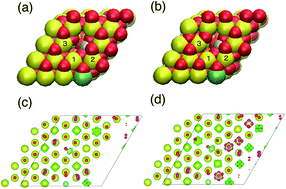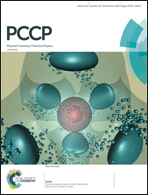A detailed insight into the catalytic reduction of NO operated by Cr–Cu nanostructures embedded in a CeO2 surface
Abstract
Replacing rare and expensive elements, such as Pt, Pd, and Rh, commonly used in catalytic devices with more abundant and less expensive ones is mandatory to realize efficient, sustainable and economically appealing three-way catalysts. In this context, the surface of a Cr–Cu/CeO2 system represents a versatile catalyst for the conversion of toxic NO into harmless N2. Yet, a clear picture of the underlying mechanism is still missing. We provide here a detailed insight into such a reaction mechanism by means of a combined experimental and theoretical study. Fourier-transform infrared spectroscopy is used to detect all the products resulting from catalytic reactions of NO and CO on the surface of a Cr–Cu/CeO2 nanocatalyst. CO pulsing experiments unveil that reactions of CO with O atoms at the Cr–Cu/CeO2 surface are the major factors responsible for the formation of surface vacancies. On these grounds, a comprehensive picture of the NO reduction and the role of both Cu and Cr dopants and vacancies is rationalized by first-principles modeling. Our findings provide a general route for the realization of ceria-based cost-effective catalysts.



 Please wait while we load your content...
Please wait while we load your content...